Compact Unit
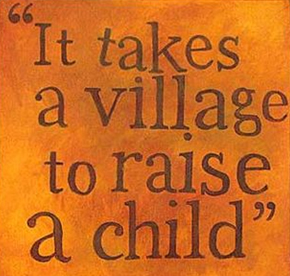
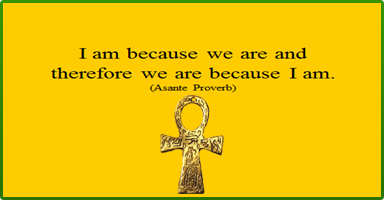
FAMILY ENRICHMENT/KINSHIP SUNDAY
Sunday, August 5, 2012
Guest Writer for This Unit: Lisa D Jenkins is the senior pastor of the Blessed Trinity Baptist Church in Harlem, New York and an adjunct lecturer of cultural diversity for York College/City University of New York.
The unit you are viewing, Family Enrichment/Kinship Sunday, is a compact unit. This means that it is not a complete commentary of the Scripture(s) selected for this day on the calendar, nor does it have a full, supporting cultural resource unit and worship unit. Instead, to enliven the imagination of preachers and teachers, we have provided a sermonic outline, songs, suggested books, and suggested articles, links, and videos. For additional information see Family Enrichment/Kinship Sunday in the archives of the Lectionary for 2009–2011. 2012 is the second year that the African American Lectionary has featured compact units for moments on its liturgical calendar.
I. Description of the Liturgical Moment
In his book titled Ministry in a Disaster Zone, Dr. Alvin C. Bernstine states that the words uttered by Jesus in John 19:25-27 are the only words Jesus uttered exclusively to the church while he hung on the cross.1 We are reminded that this awful yet hope-filled and salvific moment at the cross was a disaster zone, yet it is was a moment which also was used to remind us of our obligation to our family, our community, our village. Our communities are replete with “disaster zones”—substance abuse, unemployment, economic downturns and financial fallouts, prisons disproportionately overrun with people of color, ineffective systems of education and young people who look at us as if we have dropped the ball because all too often, we have.
Has African American culture become so westernized that we have forgotten the village concept and its import for our survival? Do we not remember or know that in order for us to survive we are intricately interdependent upon one another? In a disaster zone, search and rescue operations are launched. This liturgical moment reminds us of the imperative that we search and rescue our brothers and sisters, not just those within the four walls of our houses of worship, but those outside the walls. It is signally important that each of us remembers that I am because we are, and we are because I am!2
II. Family Enrichment/Kinship Sunday: Sermonic Outline
A. Sermonic Focus Text(s): John 19:25-27 (New Revised Standard Version)
(v. 25)….Meanwhile, standing near the cross of Jesus were his mother, and his mother’s sister, Mary the wife of Clopas, and Mary Magdalene. (v. 26) When Jesus saw his mother and the disciple whom he loved standing beside her, he said to his mother, “Woman, here is your son.” (v. 27) Then he said to the disciple, “Here is your mother.” And from that hour the disciple took her into his own home.
B. Possible Titles
i. People, Peril, Pride, and a Promise!
ii. Love Has Everything to Do with It!
iii. The Providential Power of God’s Promise
C. Point of Exegetical Inquiry
When we examine this Scripture within its context, we are led to the front seat of our stage of inquiry, allowing us to draw understanding for today. What we see is the execution of Jesus the Christ by the Roman Government. Heretofore, in the New Testament we have been witnesses to the radicality of Jesus, who stood in opposition to the established norms of hegemony, extreme poverty, and injustice. And now we stand at the point where Jesus is being lynched because of who he is—the Savior—the one who would offer salvation not only from our sins, but from our situations.
Looking at our text, with the aforementioned backdrop in mind, one of the phrases which stands out is “standing near.” The phrase stands out because 1) it occurs near the beginning of our Scripture, setting the tone and position of the participants and 2) this phrase of locality references the actual participants, those who are witnessing the awful culmination of wickedness and depravity being carried out by the Roman Government, which has partnered with the hypocrisy and machinations of the religious establishment, resulting in the exercise of capital punishment. The victim: Jesus.
The word “standing” or “stood” is translated from the Greek word histemi. Histemi brings with it not just the understanding of “supporting oneself on the feet in an erect position,” as defined by Merriam-Webster, but it also conveys a posture of maintenance, being firm, fixed and established. Histemi gives us the understanding of steadfastness coupled with an immovable and unwavering posture, in this case even in the midst of evil. With this in mind, the participants in our Scripture who stand near the cross of Jesus are remaining firm, focused, and unwavering. They maintain their posture despite the horrific scene before them.
Although western culture views family in terms of DNA and biological constraints, in our African-centered context we know that family extends beyond the biological. For us, the family is our community, our village. With this in mind, the question is what will we, as a people, do to save our “Family” in the face of continued oppression, economic disparity, political machinations, and the continued slaughtering of our young sons and daughters? As Jesus hung on the cross dying, he gave instructions. “Woman,” he says to his mother, Mary, “Here is your son.” He then says to the disciple John, “Here is your mother.” There were no adoption papers to be filled out, no guardianship to be recorded with the city clerk. Only the understanding that in order for the family, the village, the community to maintain its fabric of strength and resilience in the face of wickedness, there must be an acknowledgment of each thread, each person, that I am because we are, and we are because I am.
III. Introduction
On September 21, 2011, the state of Georgia executed Troy Anthony Davis with no regard for recanting accusers and the suppression of forensic evidence that might very well have exonerated him. But even in the face of so much doubt and with the fabric of certainty unraveling before the eyes of a watching world, Troy Davis was led to his death. Not six months later, we were punched in the gut again by the death of Trayvon Martin in Florida. His death, at the hands of a vigilante gated community watch captain, played out in a scenario we have seen too often: black boy killed for being viewed as “suspicious” (code words in America for “okay to shoot”). They join the countless other men (and women) of color in our country who have been lynched—physically, emotionally, and psychologically.
Troy Davis and Trayvon Martin remind us that not much has changed even fifty-six years after 15-year-old Emmett Till was beaten, tortured, shot, and drowned in the Tallahatchie River with a 7- pound cotton gin tied around his neck. His mother, Mamie Till Bradley, insisted that his body be brought back home to Chicago and demanded that the casket remain open so that the world could see her son. She was criticized for allowing the bloated and disfigured body of her son to be seen, but she remained steadfast, firm, and fixed. Her posture did not waver; she was immovable in the midst and aftermath of domestic terrorism carried out against citizens of color in the United States.
| Troy Davis | Trayvon Martin | Emmett Till | ||
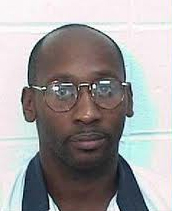 |
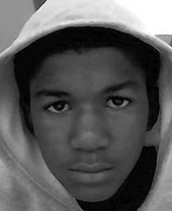 |
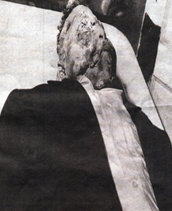 |
And so what is our challenge? As a community, as a village and family of believers, our challenge is to show up. Too often injustice continues because we fail to show up for our brothers and our sisters. We might think that we are ill-equipped, lacking the skills of mobilization or the eloquence of speech. But we see in our text that in order for Jesus, hanging on the cross, to utter instructions to his family (v. 26), they—his biological and extended family—the family had to show up. Thousands showed up to the Roberts Temple Church of God in Chicago, Illinois to pay their last respects to Emmett Till. And millions showed up on Facebook, Twitter, and in front of the prison to denounce the approaching death of Troy Davis. For Trayvon Martin we also showed up on Facebook and Twitter and took to the streets, radio, and television and even held “Hoodie Sunday,” which was a rarely seen twenty-first century occasion of united worship in the African American faith community. But what happens once the casket is closed, the chair is emptied, the trial is over, and the cross is taken down? Where is the community? What happens to the village? Where will we, the mothers and fathers, brothers and sisters, aunties and uncles, be found? Where are the ones whom God daily instructs, while standing at watch, “Behold, your son(s)” [and daughters]?
IV. Moves/Points
(v. 25)….Meanwhile, standing near the cross of Jesus were his mother, and his mother’s sister, Mary the wife of Clopas, and Mary Magdalene. (v. 26) When Jesus saw his mother and the disciple whom he loved standing beside her, he said to his mother, “Woman, here is your son.” (v. 27) Then he said to the disciple, “Here is your mother.” And from that hour the disciple took her into his own home.
Move/Point One – The Family Standing Despite…
a. Despite the terror of injustice, families can stand strong;
b. Despite economic inequities, together we are prosperous; and
c. Despite political machinations, together we are wise.
Move/Point Two – The Family Standing Focused\
a. Mary and the others had their eyes focused on Jesus;
b. We must focus on the predicaments of each other; and
c. Our eyes must stay focused on God.
Move/Point Three – The Family Standing Faithful
a. When our resources appear diminished, we will remember that Jesus is our Sustainer;
b. When our journey gets rough, we will continue steadfast in the power of the Holy Spirit; and
c. When our landscape shifts under the weight of unrighteousness, we acknowledge and know that God will be our Rock.
V. Celebration
The Bible says that Mary, mother of Jesus, along with his extended family, showed up and stood by the cross. Our question today is where will you be when the dirt goes down? Will you run like the rest of the disciples did in Mark 14:50? Or will you show up? Can you stand to stand at the crossroads when everyone has fled the scene? Can you stand at the crossroads when our sons and daughters have been mandated to carry and hang upon the crosses of this country? Will you say you’ll be there because it makes for a good sound bite? The cross is not glamorous. You can’t wear pumps or penny loafers at the cross; because the cross is not about keeping up appearances! Tailored jackets and ties are inappropriate at the cross. Battle fatigues are required attire at the cross. Squeamishness won’t work at the cross. There’s blood at the cross! And yes, there is destruction at the cross; but because the right ones show up, there’s hope at the cross! There were far more who did not show up at the cross of Jesus than did. But those who showed up made a difference!
The Bible says that they first showed up! And when they showed up, Jesus acknowledged them, and then he spoke: “Woman, here is your son.” In other words, I know you’re here for me, but I need you to focus on who is next to you. I need for you to focus on your brother and your sister; I need you to focus on the extended family—the village. After she looks up, Jesus then instructs her to take her eyes off of him and look at John, who has no biological relation to either of them! So now she’s got to look back down and see her new responsibility. Her starting point is to show up and stand. Then she has to look to Jesus, the author and finisher of not just her faith but her community’s faith as well.
Brothers and sisters, when we look up to Jesus, he will give us our marching orders. When we look up to the cross, we will understand our assignment. At the cross Jesus is rearranging our family tree. At the cross, we behold the beloved community. At the foot of the cross Jesus is calling us together. In my sanctified imagination I can hear Jesus saying, “Walk together children, don’t you get weary. Work together children, don’t you get weary, there’s a great camp meeting in the Promised Land!” But the good news is that this promised land is not in the sky, by and by. When we show up, and look after each other, with our eyes on our Savior, the promised land is now, it’s within us!
VI. Illustration(s)
I have always been a die-hard PC person. The Microsoft operating system has always been my friend. Earlier this year, however, I was persuaded by two of my sorority sisters to purchase a MacBook Pro. I trusted these women who are part of my sisterhood and family—even though one lives in California and I’ve never laid eyes on her in person. As a result of my trust in these women who are a part of my extended family, I purchased the MacBook Pro. Later, after years of being a die-hard Blackberry user, I opted for the new iPhone at the recommendation of individuals in my Facebook community. And finally, I was overcome with the positive aspects of the iPad as lauded by my colleagues in ministry. With my new arsenal of products, I have been superwoman!! Various people who had no direct DNA relation to me took an interest in me so that I could become more efficient.
But more than my extended family and community influencing my day-to-day life in such a new and profound way is the way the family of products work together. When my MacBook Pro recognizes my iPhone and when they both recognize my iPad, all three sync up through iCloud. And the family of products do things together that they would never be able to do alone. If we sync up, we too will be able to do things we would never be able to do alone. As Christians our example of community and family is the Trinity—God the Father, God the Son, and God the Holy Spirit, who are always in sync! Brothers and sisters, let’s sync up!| —Lisa D. Jenkins |
VII. Sounds, Sights, and Colors in This Passage
Some of the sounds, sights, and colors include:
| Sounds: | The voice of Jesus giving instruction to his family (biological—Mary, and extended—John); soldiers and gawkers laughing and mocking; weeping of the women in the extended family of Jesus (Mary, wife of Clopas and Mary Magdalene); |
| Sights: | Two other men being executed by the Roman State; the clothing of Jesus, which has been gambled for and divided by soldiers; the holy city of Jerusalem in the distance; and |
| Colors: | The darkness during midday; the dark dirt and dust on Golgotha’s Hill; the brown wood upon which Jesus hung; and the bright crimson blood which dripped from the brow and piercings of Jesus. |
VIII. Songs to Accompany This Sermon
A. Hymn(s)
B. Well-known Song(s)
- Show Up! By John P. Kee

- We Are Family. By Bernard Edwards and Nile Rodgers
- If My People. By Fred Hammond

C. Modern Song(s) (Written between 2005–2011)
- Family (There’s a Healing). By Donald Lawrence

- Standing. By William McDowell
- We Are One. By William Murrell

- Every Day (Family Reunion). By Thorsten Schey and Jasmine-Dwan Johnson
D. Spiritual(s)
- I Know Who Holds Tomorrow. By Ira F. Stamphill. Arr. by Evelyn Simpson-Curenton

- Come, Come! Ev’rybody Come! By Marilyn E. Thornton
E. Liturgical Dance Music
- Let God Use You. By Walter E. L. Scrutchings
- Hallelujah, You’re Worthy. By Judith McAllister
F. Song for the Period of Prayer
- You Keep on Blessing Me. By Luther Barnes
- Somebody Prayed for Me. By Dorothy Norwood and Alvin Darling

G. Sermonic Selection
H. Invitational Song(s)
I. Benediction Song or Instrumental
IX. Videos, Audio, and/or Interactive Media
- “For the Millions.”By Abiodun Oyewole, as performed by the St. Paul Community Baptist Church, Rev. David K. Brawley, Pastor. Online location:
http://www.youtube.com/watch?v=wpQUu4RdCCI (accessed 22 February 2012)
- “Fight the Power.” By Public Enemy. Online location:
http://www.youtube.com/watch?v=pWTrAVLhbS8&feature=related (accessed 22 February 2012)
- “What Makes a Good Family,” by Afro Kids. Online location:
http://www.afrokids.com/family.htm#watch (accessed 18 January 2012)
- The Brooklyn Allstars Live in Atlanta perform “Don’t Forget The Family Prayer.” Online location:
http://www.youtube.com/watch?v=ol_rFw2DReg (accessed 19 January 2012)
X. Books to Assist in Preparing Sermons or Bible Studies (Sridhar, put in the book covers)
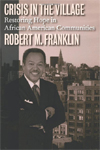 |
Franklin, Robert M. Crisis in the Village: Restoring Hope in African American Communities. Minneapolis, MN: Fortress Press, 2007. |
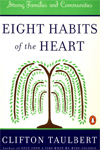 |
Taulbert, Clifton. Eight Habits of the Heart: Embracing the Values that Build Strong Families and Communities. New York, NY: Penguin, 1999. |
 |
Alexander, Michelle. The New Jim Crow: Mass Incarceration in the Age of Colorblindness. New York, NY: The New Press, 2010. |
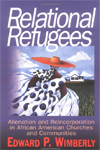 |
Wimberly, Edward P. Relational Refugees: Alienation and Re-Incorporation in African American Churches and Communities. Nashville, TN: Abingdon, 2000. |
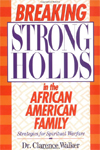 |
Walker, Clarence. Breaking Strongholds in the African American Family: Strategies for Spiritual Warfare. Grand Rapids, MI: Zondervan, 1996. |
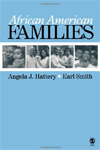 |
Hattery, Angela J., and Earl Smith. African American Families. Thousand Oaks, CA: Sage Publications, Inc., 2007. |
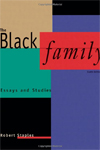 |
Staples, Robert. The Black Family: Essays and Studies. Florence, KY: Wadsworth Publishing, 1998. |
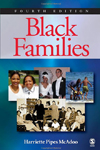 |
McAdoo, Harriette Pipes. Black Families. Thousand Oak, CA: Sage Publications, Inc., 2006. |
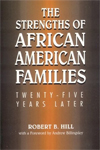 |
Hill, Robert B. The Strengths of African-American Families: Twenty-five Years Later. Lanham, MD: University Press of America, 1999. |
XI. Links to Helpful Websites
- National Black Church Initiative. Online location:
http://www.naltblackchurch.com/healing-family.html (accessed 22 February 2012)
- National Black Church Family Council. Online location:
http://www.nbcfamilycouncil.com/ (accessed 22 February 2012)
- “Can the Church Save the African American Family?” (PDF link). Online location:
http://cslr.law.emory.edu/fileadmin/media/PDFs/Op-Ed_Pieces/Franklin.Can_the_Church_Save_African_American_Families.pdf (accessed 22 February 2012)
- African American Family Enrichment Institute. Online location:
http://enrichyourfamily.org/ (accessed 18 January 2012)
- Black Child Development Institute. Online location:
http://blackchilddevelopment.club.officelive.com/enrichment.aspx (accessed 18 January 2012)
- The Lincoln Family Life Center. Online location: http://www.lincolnfamilylifecenter.org/ (accessed 18 January 2012)
- Afro Kids. Empowering parents and guardians to build our children’s self esteem, cultural heritage, and future. Online location: http://www.afrokids.com/index.htm (accessed 18 January 2012)
XII. Notes for Select Songs
A. Hymn(s)
- Hold to God’s Unchanging Hand. By Jennie Wilson
Location:
African American Heritage Hymnal. Chicago, IL: GIA Publications, 2001.
- Faith of Our Fathers. By Frederick William Faber
Location:
African American Heritage Hymnal. #409
B. Well-known Song(s)
- Show Up! By John P. Kee
Location:
The Essential John P. Kee. New York, NY: Verity, 2007.
- We Are Family. By Bernard Edwards and Nile Rodgers
Location:
Sister Sledge. We Are Family. Burbank, CA: Rhino Flashback, 2008.
- If My People. By Fred Hammond
Location:
Hammond, Fred & Radical For Christ. The Inner Court. New York, NY: Verity, 1997.
C. Modern Song(s) (Written between 2005–2011)
- Family (There’s a Healing). By Donald Lawrence
Location:
The Murrells. Family Prayer. New York, NY: Verity, 2008.
- Standing. By William McDowell
Location:
Arise (The Live Worship Experience). Nashville, TN: Delivery Room Music/Light Records, 2011.
- We Are One. By William Murrell
Location:
The Full Gospel Church Fellowship, PRAISE & WORSHIP: Embracing the Next Generation. Nashville, TN: Compendia Records, 2007.
- Every Day (Family Reunion). By Thorsten Schey and Jasmine-Dwan Johnson
Location:
Various Artists. Madea’s Family Reunion. New York, NY: Motown, 2006.
D. Spiritual(s)
- I Know Who Holds Tomorrow. By Ira F. Stamphill. Arr. by Evelyn Simpson-Curenton
Location:
African American Heritage Hymnal. #415
- Come, Come! Ev’rybody Come! By Marilyn E. Thornton
Location:
Zion Still Sings for Every Generation. Nashville, TN: Abingdon Press, 2007. #142
E. Liturgical Dance Music
- Let God Use You. By Walter E. L. Scrutchings
Location:
Just Call on Jesus. Akron, OH: Scrutchings Music, 1997.
- Hallelujah, You’re Worthy. By Judith McAllister
Location:
Brooklyn Tabernacle Choir. I’ll Say Yes. Mobile, AL: Integrity, 2008.
F. Song for the Period of Prayer
- You Keep on Blessing Me. By Luther Barnes
Location:
Somehow, Someway. Atlanta, GA: Atlanta International, 2005.
- Somebody Prayed for Me. By Dorothy Norwood and Alvin Darling
Location:
Zion Still Sings. #166
G. Sermonic Selection
- Give Him Glory. By DeAndre Patterson
Location:
DeAndre Patterson. Indianapolis, IN: Tyscot Records, 2004.
- The Prayer. By David Foster and Carol Bayer Sager
Location:
McClurkin, Donnie & Yolanda Adams. Again. New York, NY: Verity Records, 2003.
H. Invitational Song(s)
- Standing on the Promises. By R. Kelso Carter
Location:
African American Heritage Hymnal. #373
- I Need You to Survive. By Hezekiah Walker
Location:
Walker, Hezekiah and The Love Fellowship Choir. Family Affair II: Live at Radio City Music Hall. New York, NY: Verity, 2002.
I. Benediction Song or Instrumental
- The Vision. By Patrick Love
Location:
Love, Patrick & The A. L. Jinwright Mass Choir. The Vision. Detroit, MI: Crystal Rose Records, 1998.
- Unchangeable. By Raymond Reeder
Location:
Smallwood, Richard with Vision. Promises. New York, NY: Verity, 2011.
Notes
1. Bernstine, Alvin C. Ministry in a Disaster Zone: The Seven Cross Sayings of Jesus as Preached at an African-American Urban Church. Brooklyn: ACB Ministry @ Mt. Lebanon Baptist Church, 2005. p. 29.
2. African (Asante) Proverb.



